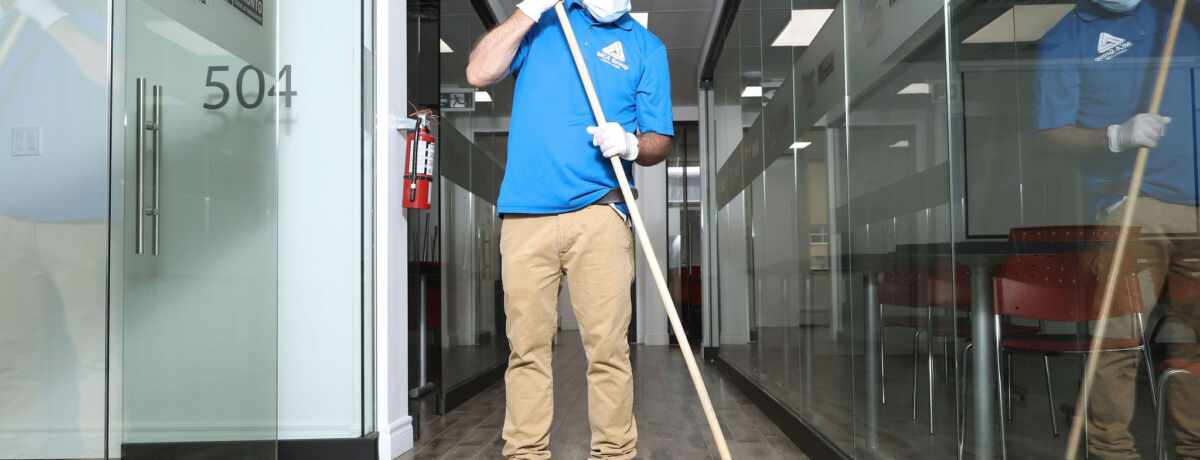There was a time when floor wax options were limited to solid paste that needed to be applied to the floor on one’s hands and knees. Today, paste floor wax is still available and liquid wax has been introduced to the market for more convenient application. However, many types of floors do not need to be waxed. In fact, doing so can damage the material. So, which floors need waxing? Keep reading to find out.
What Is Floor Wax?
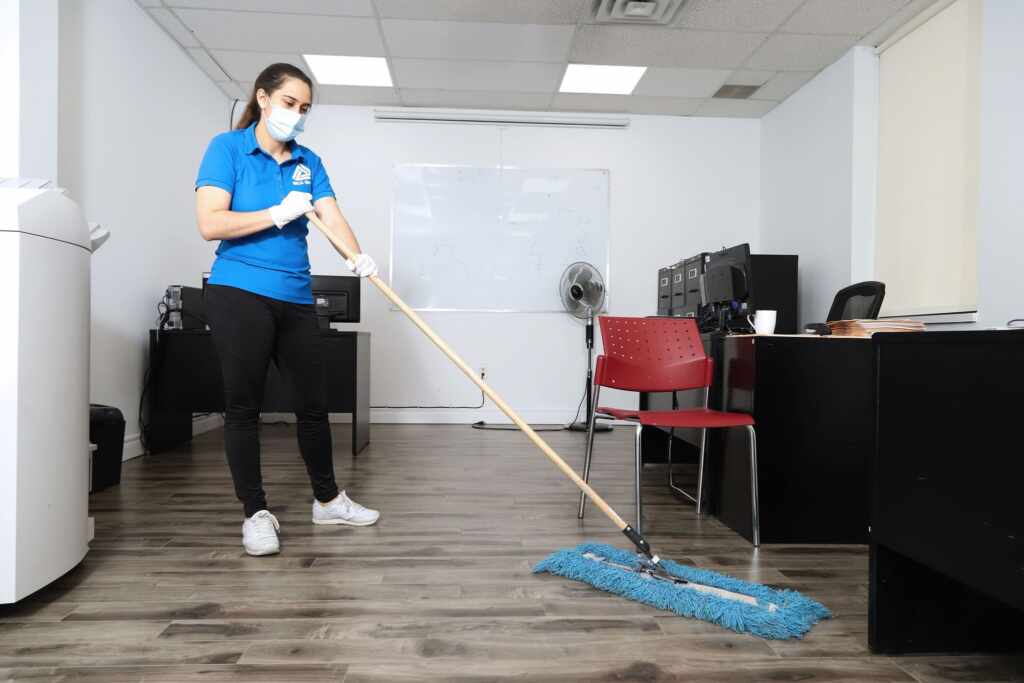
Floor wax is a special polish used to give floors a nice shine and is made of plant-based oils like beeswax or carnauba wax. This type of natural wax for floors is still in use today, however, many experts and homeowners prefer synthetic substitutes, which have grown in popularity in recent decades. Usually sold as a liquid, synthetic floor wax – often referred to as floor finish or floor polish – is easier to apply to floors because, instead of getting down on your hands and knees to apply the wax, liquid wax can be applied with a microfibre pad or a mop.
Should You Wax Your Floors? (Benefits)
Waxing keeps your floor looking polished and clean. The shine gives the room a special touch and can be a great way of impressing customers if you are a business. You may be surprised by how much difference a waxed floor can make. Some of the other benefits of waxing your floor are:
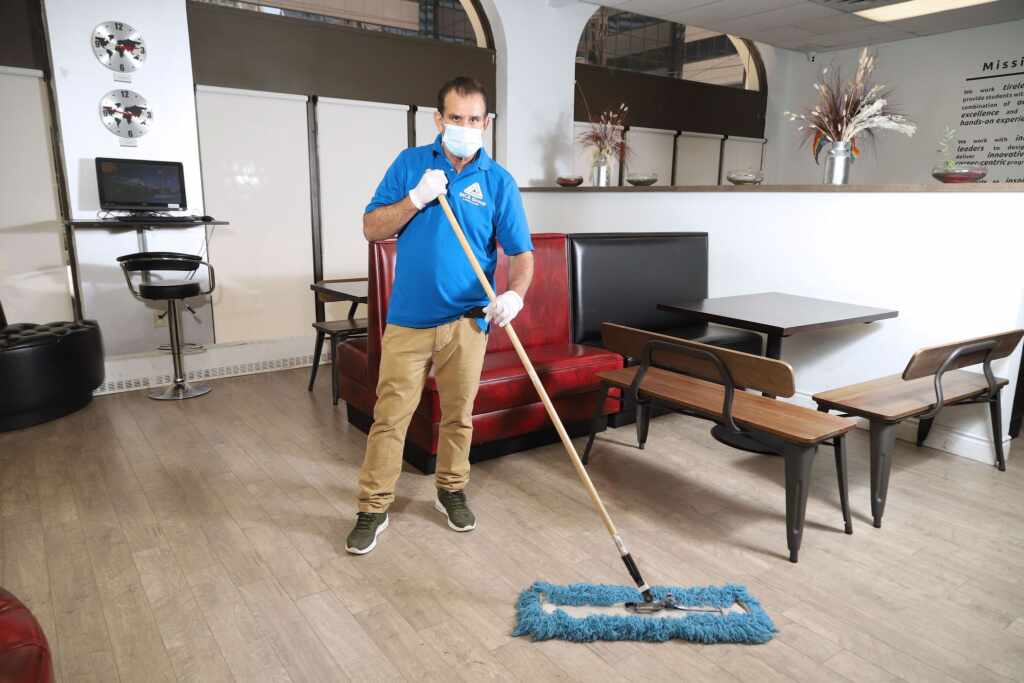
- Maintenance – Waxing your floor regularly is an excellent way to protect your floors. The wax prevents scratches and stains from liquid spills and is especially beneficial in preserving floors in high traffic areas.
- Illuminates a Room – Not only does a waxed floor make a room look nice, but the shine also has a way of making the room look brighter.
- Covers up Imperfections – Even if you are diligent in maintaining your floors, there are some things that may be beyond your control. An accident on the floor can create dents or marks that cannot be fixed. Waxing your floors can make such defects less obvious.
- Safety – If you are a business owner this is extremely important for you. The last thing you want is for a customer to fall on your floors. Waxing floors can reduce the chances of a slip because it gives the floor more grip.
Why Wax Hardwood Floors?
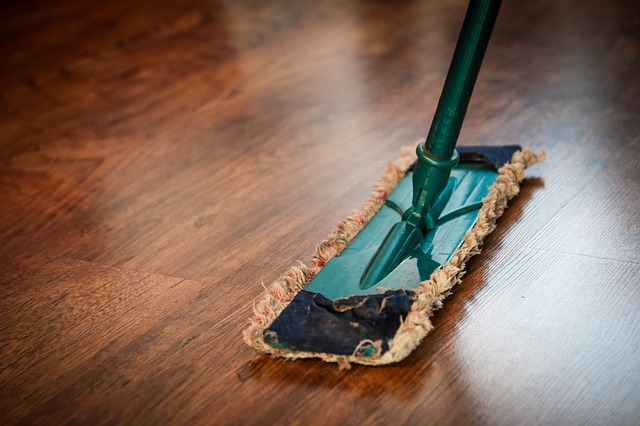
Hardwood floors are classic and give your home a beautiful look. However, if they’re not maintained well, they become dull and can look quite unattractive. One of the most economical ways to keep your hardwood floors looking polished is by applying an appropriate wax for hardwood floors. Since hardwood floors are an expensive flooring option, most people want to do as much as they can to prolong the life of their hardwood floors.
Regularly waxed floors last longer than unwaxed floors. When a thin layer of wax is applied to a floor and buffed to shine, it creates a protective seal that preserves hardwood floors. Waxing hardwood floors periodically is essential for preserving the underlying finish.
What Type of Wax Should I Use?
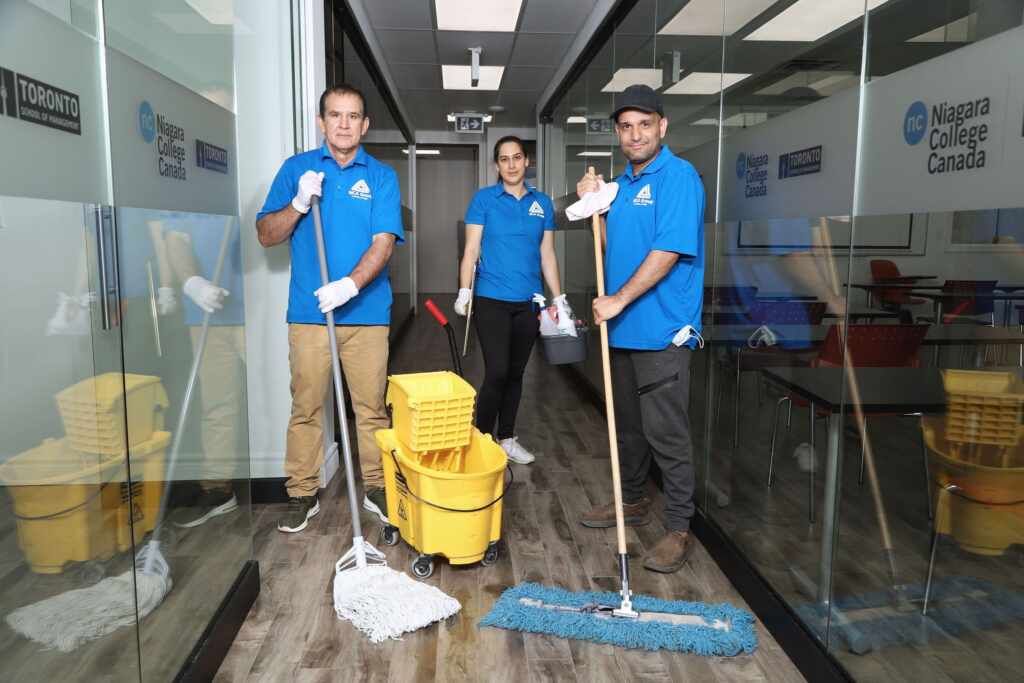
The type of floor wax you should use will depend on the type of floor you have. Solid paste wax contains more wax and less solvent, making it more laborious to apply to floors. The benefit of solid paste wax is that you don’t need to wax your floors as often. Liquid wax, on the other hand, contains more solvent, making it easier to apply, but floors require more coats than solid paste wax.
When choosing the best wax for your floor, choose a solvent-based wax instead of a water-based or acrylic wax because these can discolour finished floors and damage unfinished floors.
Another thing to be mindful of if you have hardwood floors is that some wood floor waxes are designed for use on darker woods while some are best for lighter woods.
Many hardwood waxes work well for all colours but it’s best to read the label to be sure.
Which Floors Need Waxing?
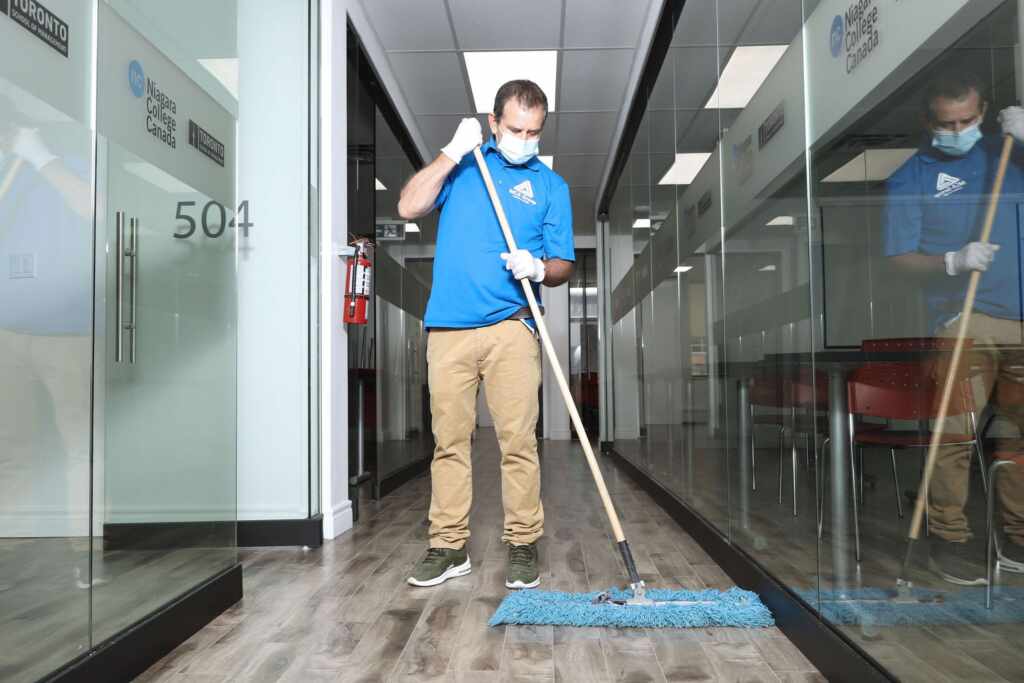
- Hardwood – All hardwood floors need waxing from time to time, whether they are made from new or recycled wood. This is because wood is porous and waxing wood floors can help seal wood surfaces and protect them from stain and scratches. We recommend waxing your floors once every 6 to 18 months based on the amount of floor traffic.
- Terra-Cotta – Terra-cotta and other kinds of unglazed floor tiles usually have a sealer and wax applied as a finish when they are installed. This makes the floor more vibrant and protects it from damage and stains. Every 1-2 years the wax will need to be reapplied.
- Vinyl Composition Tile (VCT) – This type of tile needs to be waxed right after it is installed. To maintain the floor, it will need to be re-waxed every 6 to 12 months.
Floors that Shouldn’t Be Waxed
Even though waxing is good for most types of floors, it’s not good for all. These include:
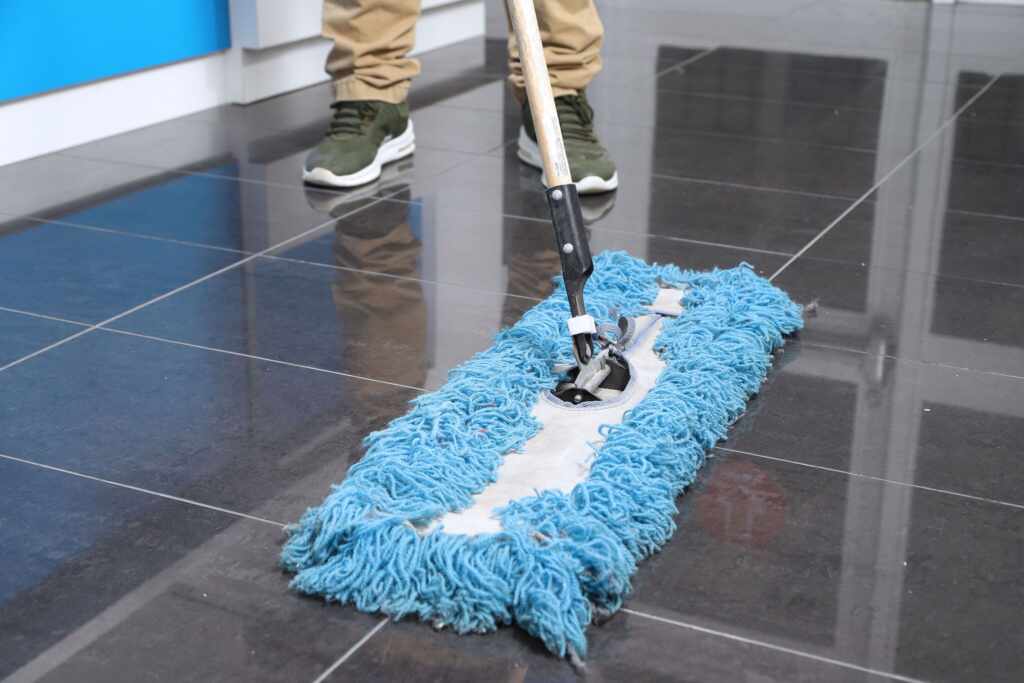
- Engineered Hardwood: Many modern hardwood floors are made from engineered hardwood planks that already come with a factory finish, making waxing unnecessary.
- Wood Laminate: These floors are made of a particleboard base that has a laminate layer on the surface. Similar to engineered hardwood, the finished product already has a finish that cannot absorb wax.
- Bamboo: Bamboo flooring often comes with finished polish that shouldn’t be waxed. Maintaining a bamboo floor simply requires the use of a natural cleaner recommended by the manufacturer.
- Natural Stone: Wax and natural stone is a terrible combination. Natural stone needs to breathe and waxing prevents it from doing so. It will also make the stone dull.
- Luxury Vinyl Tile Lvt: This type of flooring does not absorb wax. If waxed, the buildup on the surface can create a hazard.
- Ceramic Tile: The surface of these tiles is impermeable, which will prevent the wax from absorbing into the surface.
Floor Waxing Tips
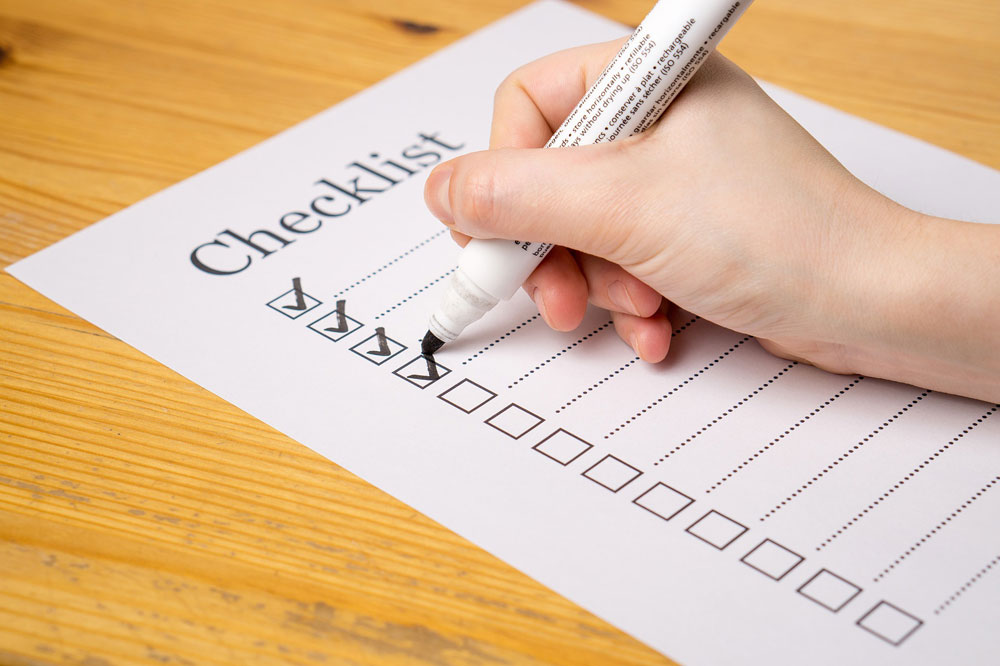
- Before you apply a new coat of wax to a hardwood floor, the old wax should be stripped using mineral spirits prior to the application of a new layer of wax.
- Solid paste waxes should be applied by hand using a cheese cloth or cotton cloth.
- If you are applying a liquid wax, use a sponge mop or a microfibre pad attached to a mop stick.
- Use a paint brush or paint roller to apply stone sealer.
- For an acrylic floor finish, use a sponge mop or micropad fiber.
How to Wax a Hardwood Floor (Step by Step)
a) Determine whether the floor has already been treated. If so, what type of wax was used – natural or synthetic? If you are unsure, touch the floor and note how it feels. If it does not have a glossy look or feel, it has not been treated before.
b) Test the floor by applying a mineral spirit or paint thinner to a cloth and then wipe it on a small area of the floor. If the cloth turns yellow or brown, your floor has been waxed before.
Choose the best wax for the type of floor you have. If the floor has been previously waxed, you will need to strip the wax off completely which is best done by a professional. Once this is done, applying the new wax can be done easily. If you have a finished floor, you can use a floor machine to remove some of the finish.
If you are waxing a floor in a public space, be sure to give notice that the floor will not be accessible for at least eight hours. Protect baseboards by using tape to ensure that wax does not get into areas it shouldn’t.
If you do, follow the next steps:
- Use a stripping solution that is suitable for your floor.
- Clean the floor by sweeping it or using a vacuum.
- Use appropriate safety gear like gloves to protect your skin.
- Line a bucket with a trash bag and pour the stripping solution into the bucket.
- Fill a second bucket with clean water and have a second mop handy.
- Apply the stripping solution using your first mop and let it sit for 5 to 10 minutes. However, do not let it dry. (If you have an auto scrubber or floor machine this can be helpful especially if you have a large floor.)
- Scrape the wax off from the edges and corners of the wall using a doodle pad or poll scraper.
- Use the second mop and water to clean the floor and allow the floor to dry completely.
a) Make sure that you are following the manufacturer’s instructions for the type of wax you are using.
b) Sweeping the floor to clear away dust and debris.
c) Use a new mop or microfibre pad. This is important because using an old mop, even though it looks clean, can add dirt to the wax and compromise the look of your floor.
d) If you are applying a liquid wax, line a bucket with a trash bag before pouring the wax into the bucket.
e) Using the mop, apply the wax to the floor. Do this one small section at a time and start at the area furthest from the door. This way you won’t need to walk over the waxed section to get to the door. Once you have spread the wax evenly over the section, move to the next section.
f) Let the floor dry completely. This typically takes about 30 minutes, but it can take longer if it is humid. Use a fan to dry the floor quicker.
g) If you need to add an additional layer of wax, do so after the previous layer has dried completely.
h) Once you are done, be sure to clean all your equipment right away because wax becomes very difficult to remove once it dries.
i) Finally, buff the floor if necessary. Some waxes are non-buff and will continue to shine without any further work. Others will need polishing with a buffing pad or a burnishing machine.
FAQs
This will depend on the surface area of your floors. Once you apply the stripper to the floor, you’ll need to wait for about 10 to 15 minutes for it to break down the dirt and grime on the floor. Then you will need to scrub the floors and use a scraper for areas the roto machine missed, then clean the floor.
Yes, however the mop should be moist not wet. It’s important that you use cold water and a natural cleaner for your waxed floor.
The type of floor you have will determine how frequently it needs to be waxed. Generally, you shouldn’t wax your floors more than once every six months. Most floors need waxing every 12 to 18 months.
There are some products on the market you can purchase to remove wax. One of the natural solutions is to mix a gallon of warm water, a cup of white vinegar and a cup of cream of tartar. Use a mop to apply the solution to the floor evenly and allow it to sit for a few minutes. This will soften the wax.
Another nontoxic solution is combining 2 gallons of hot water, 2 cups of household ammonia and 1 cup of powdered dishwasher soap that contains no bleach.
Waxing the floors has enormous benefits, and when done right, can continue to keep your floors looking clean and polished for many years to come.

